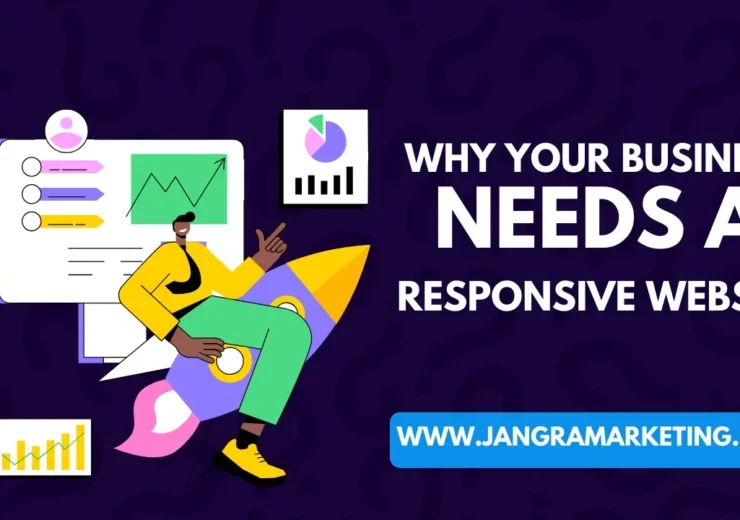Ultimate Guide to SEO for Small Businesses: Boost Your Online Presence

In today’s digital age, having a strong online presence is crucial for small businesses. One of the most effective ways to achieve this is through Search Engine Optimization (SEO). SEO can help your website rank higher on search engines, drive organic traffic, and ultimately, increase sales. In this guide, we’ll explore simple yet powerful SEO strategies that small businesses can use to optimize their websites and boost their online presence.
What is SEO?
SEO stands for Search Engine Optimization. It involves optimizing your website to improve its visibility on search engines like Google. The better your SEO, the higher your site will rank in search engine results pages (SERPs), leading to more organic (non-paid) traffic.
Why SEO is Important for Small Businesses
- Increased Visibility: SEO helps your website appear in front of more potential customers.
- Cost-Effective Marketing: Organic traffic generated through SEO is free, unlike paid advertising.
- Better User Experience: Good SEO practices improve your website’s usability and user experience.
- Competitive Advantage: Effective SEO can give you an edge over competitors who are not optimizing their websites.
Getting Started with SEO
1. Keyword Research
Understand What Your Customers are Searching For
Keyword research is the foundation of SEO. It involves identifying the words and phrases your potential customers are using to search for products or services similar to yours.
- Use Tools: Utilize tools like Google Keyword Planner, SEMrush, or Ahrefs to find relevant keywords.
- Focus on Long-Tail Keywords: These are longer, more specific phrases that have lower search volume but higher conversion rates.
- Analyze Competitors: Look at the keywords your competitors are ranking for and identify opportunities.
2. On-Page SEO
Optimize Your Website’s Content
On-page SEO refers to the elements on your website that you can control to improve your rankings.
Title Tags and Meta Descriptions
- Title Tags: Ensure each page has a unique and descriptive title tag that includes your target keyword.
- Meta Descriptions: Write compelling meta descriptions that encourage users to click on your link. Include your target keyword.
Header Tags
- Use H1 Tags: Each page should have one H1 tag that includes the primary keyword.
- Subheadings: Use H2, H3, and H4 tags to break up content and include secondary keywords.
Content Optimization
- Quality Content: Write high-quality, relevant content that provides value to your readers.
- Keyword Placement: Naturally incorporate your target keywords into the content, especially in the first 100 words.
- Internal Linking: Link to other relevant pages on your site to improve navigation and distribute link equity.
3. Technical SEO
Improve Your Website’s Technical Performance
Technical SEO involves optimizing the backend structure of your website to help search engines crawl and index your site more effectively.
Mobile-Friendliness
- Responsive Design: Ensure your website is mobile-friendly and provides a good user experience on all devices.
- Mobile Usability: Use Google’s Mobile-Friendly Test tool to check and improve your site’s mobile usability.
Site Speed
- Optimize Images: Compress images to reduce load times.
- Use Caching: Implement browser caching to speed up repeat visits.
- Minimize Code: Minify HTML, CSS, and JavaScript files to improve load times.
Secure Website (HTTPS)
- SSL Certificate: Ensure your website uses HTTPS instead of HTTP to protect user data and improve trust.
4. Off-Page SEO
Build Your Website’s Authority
Off-page SEO involves actions outside your website to improve its authority and ranking.
Backlinks
- Quality Over Quantity: Focus on acquiring high-quality backlinks from reputable websites.
- Guest Posting: Write guest posts for other blogs in your industry to earn backlinks.
- Influencer Outreach: Connect with influencers and bloggers to promote your content and gain backlinks.
Social Media
- Engage on Social Media: Share your content on social media platforms to increase visibility and drive traffic.
- Build Relationships: Interact with your audience and other businesses to build relationships and increase brand awareness.
Measuring SEO Success
Track Your Progress
Monitoring your SEO performance is crucial to understand what’s working and where improvements are needed.
Google Analytics
- Traffic Analysis: Use Google Analytics to track organic traffic, user behavior, and conversion rates.
- Goal Setting: Set up goals in Google Analytics to measure specific actions like form submissions or purchases.
Google Search Console
- Performance Reports: Check your site’s performance in search results, including clicks, impressions, and average position.
- Index Coverage: Ensure all important pages are indexed and identify any crawl errors.
Conclusion
Optimizing your small business website for search engines is a continuous process that requires time and effort. By following these proven SEO strategies, you can improve your website’s visibility, attract more organic traffic, and ultimately grow your business. Remember, SEO is not a one-time task but an ongoing effort that evolves with changes in search engine algorithms and user behavior. Stay updated with the latest SEO trends and keep refining your strategies to maintain and improve your search rankings.
For more personalized SEO strategies and expert assistance, contact Jangra Marketing today. Let us help you dominate the search engine results and take your business to new heights.
Contact Jangra Marketing
- Website: Jangramarketing.com
- Email: Contact@jangramarketing.com
- Phone: +91 9812879496
Follow Us on Social Media
- Facebook: Jangra Marketing
- Twitter: @JangraMarketing
- LinkedIn: Jangra Marketing
- Instagram: @JangraMarketing





